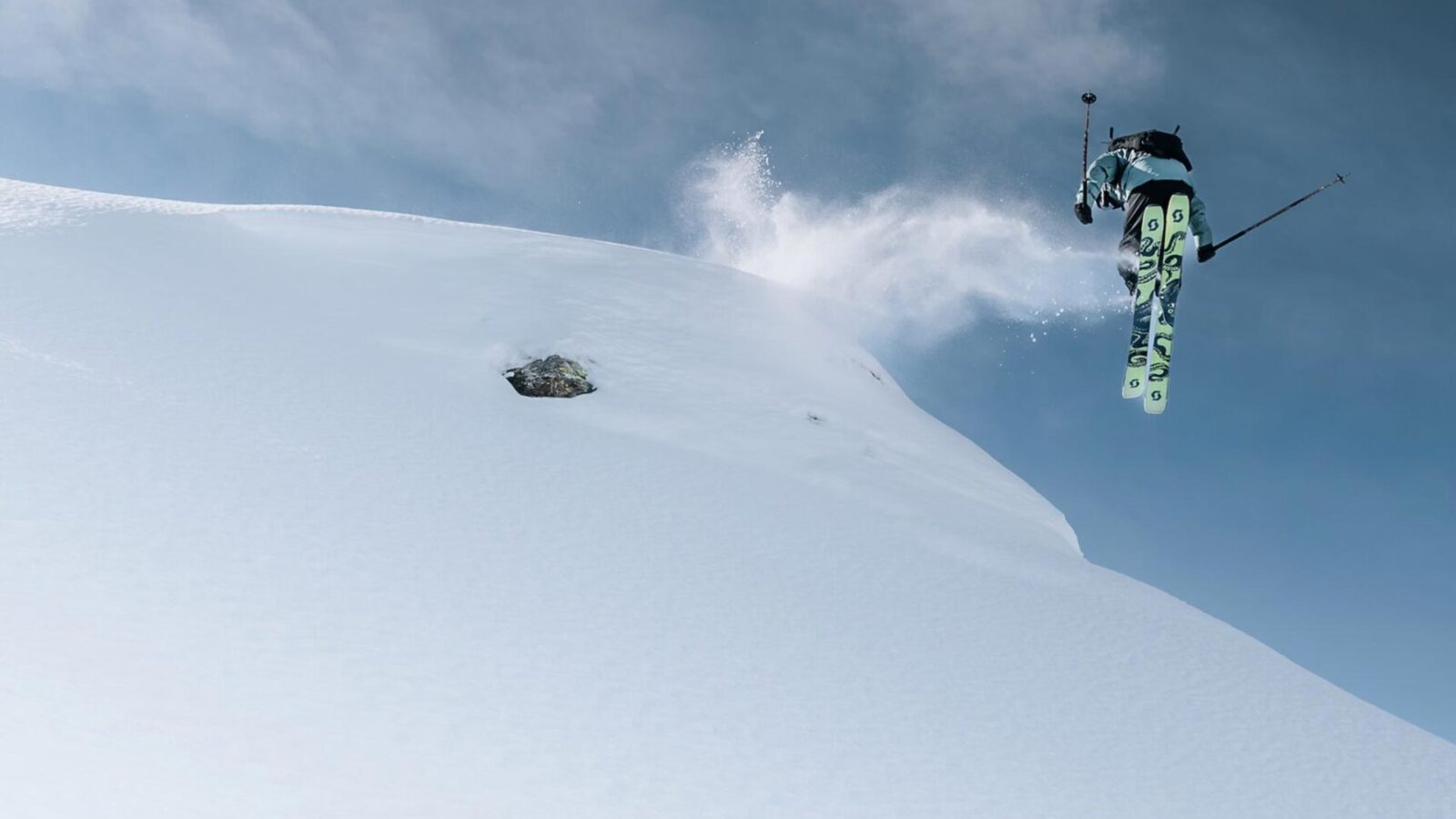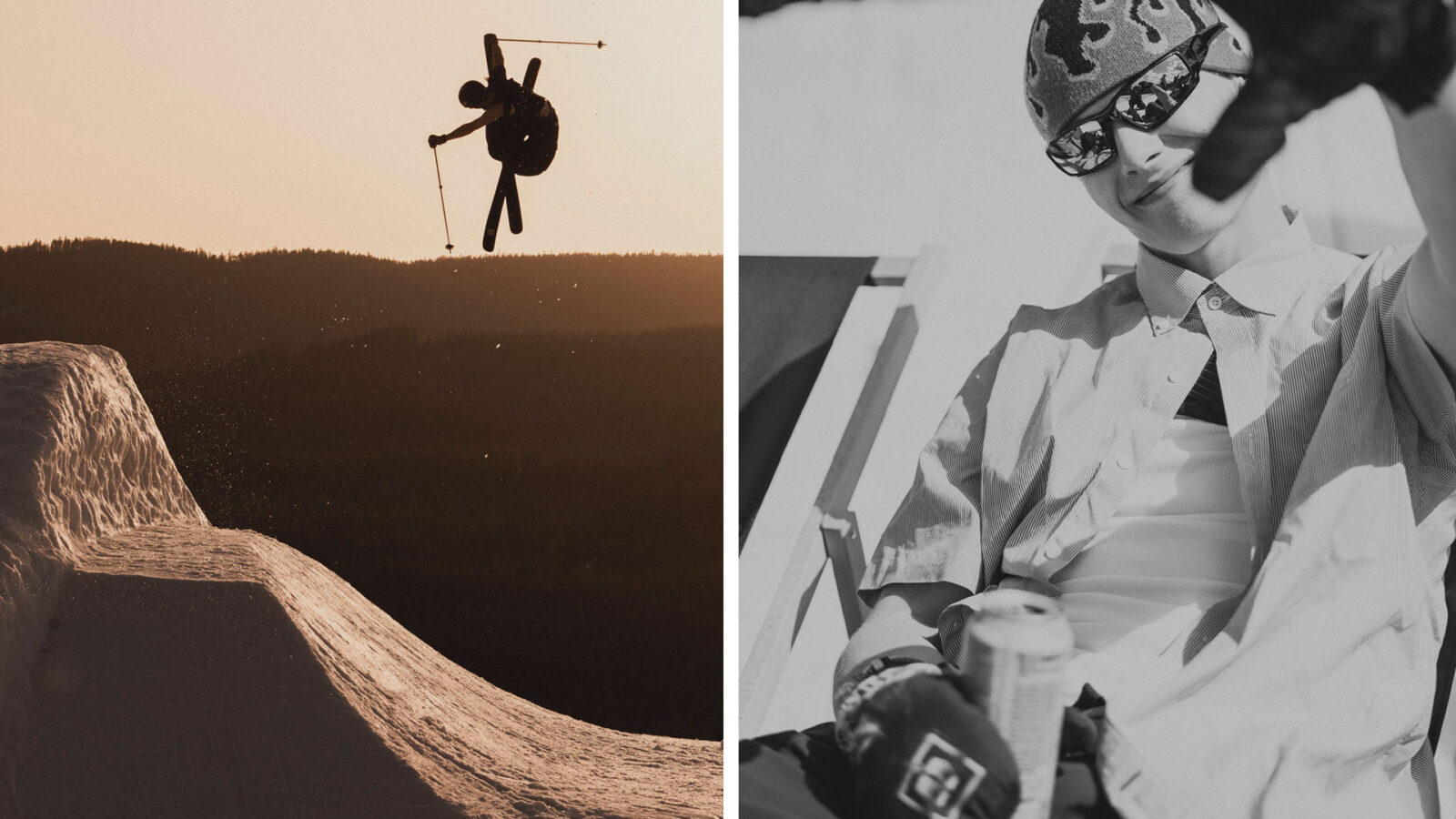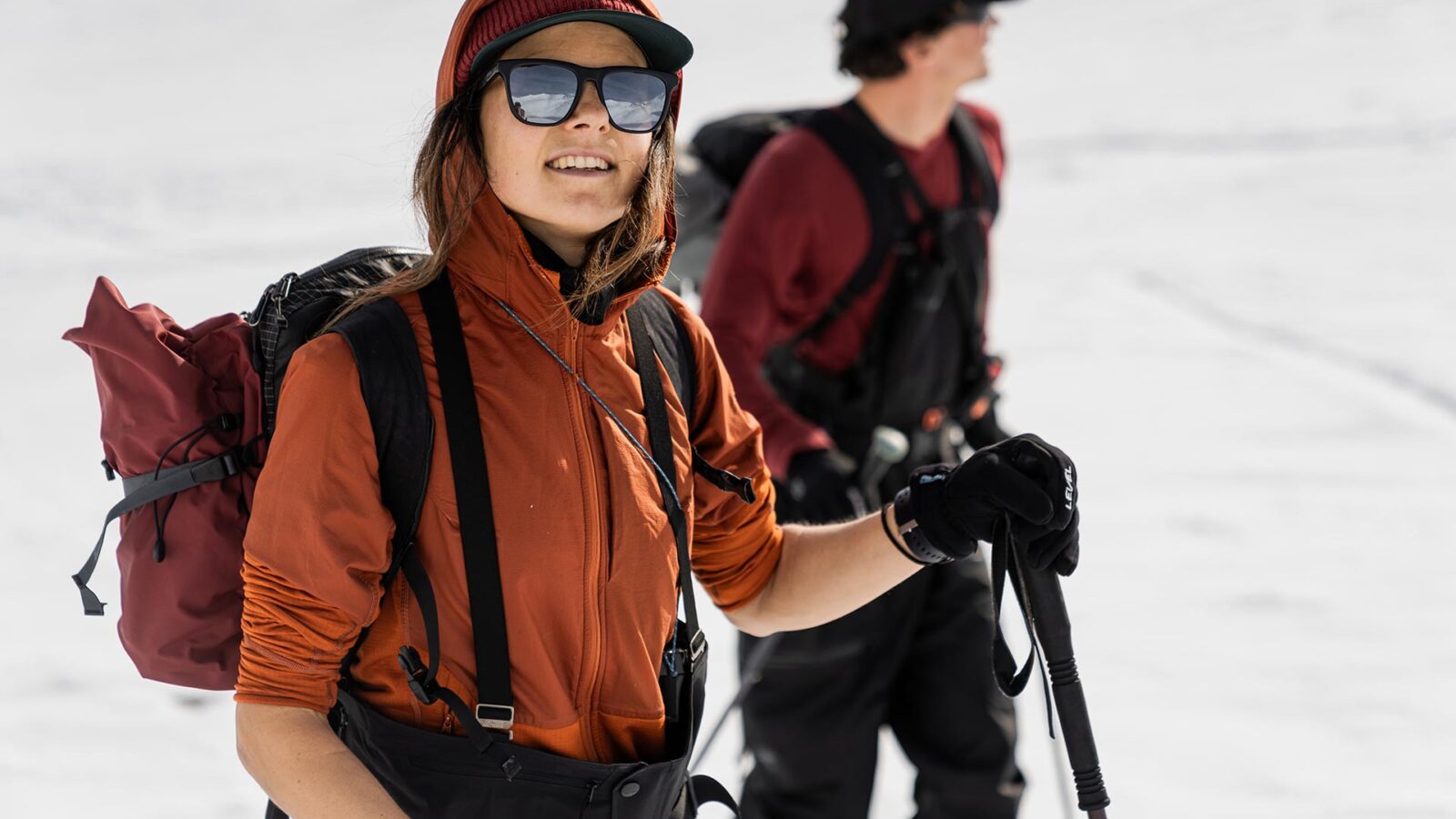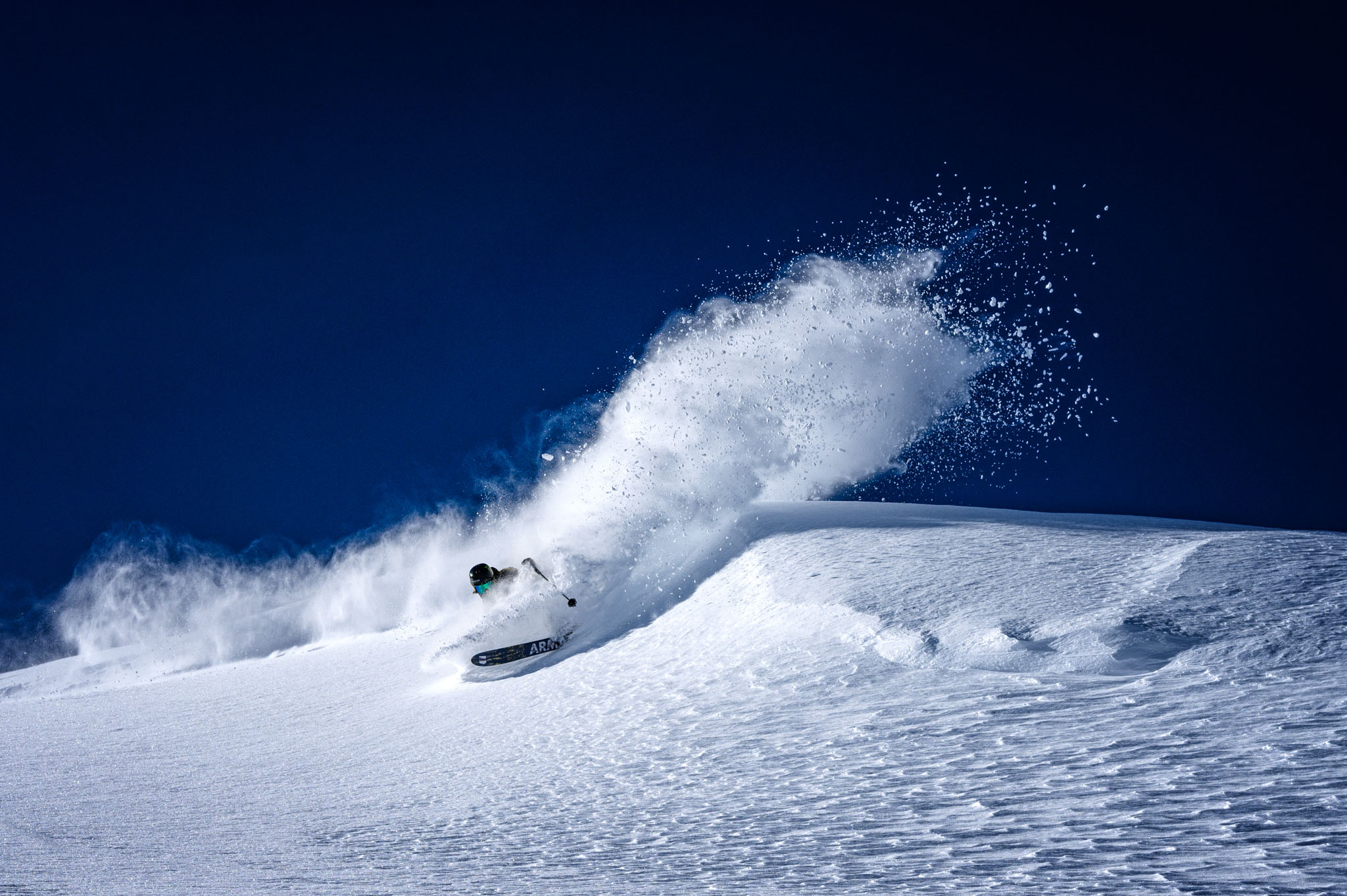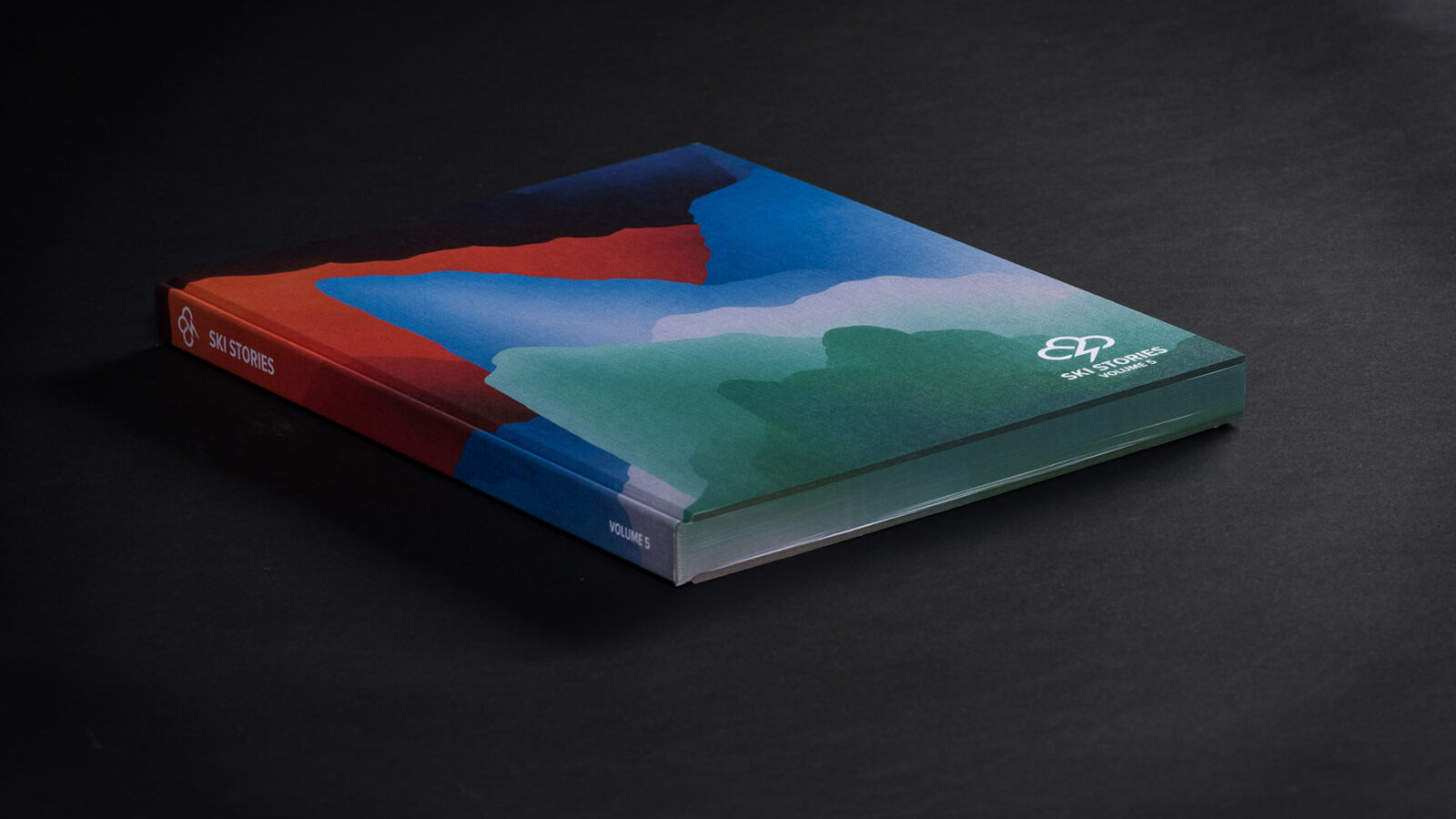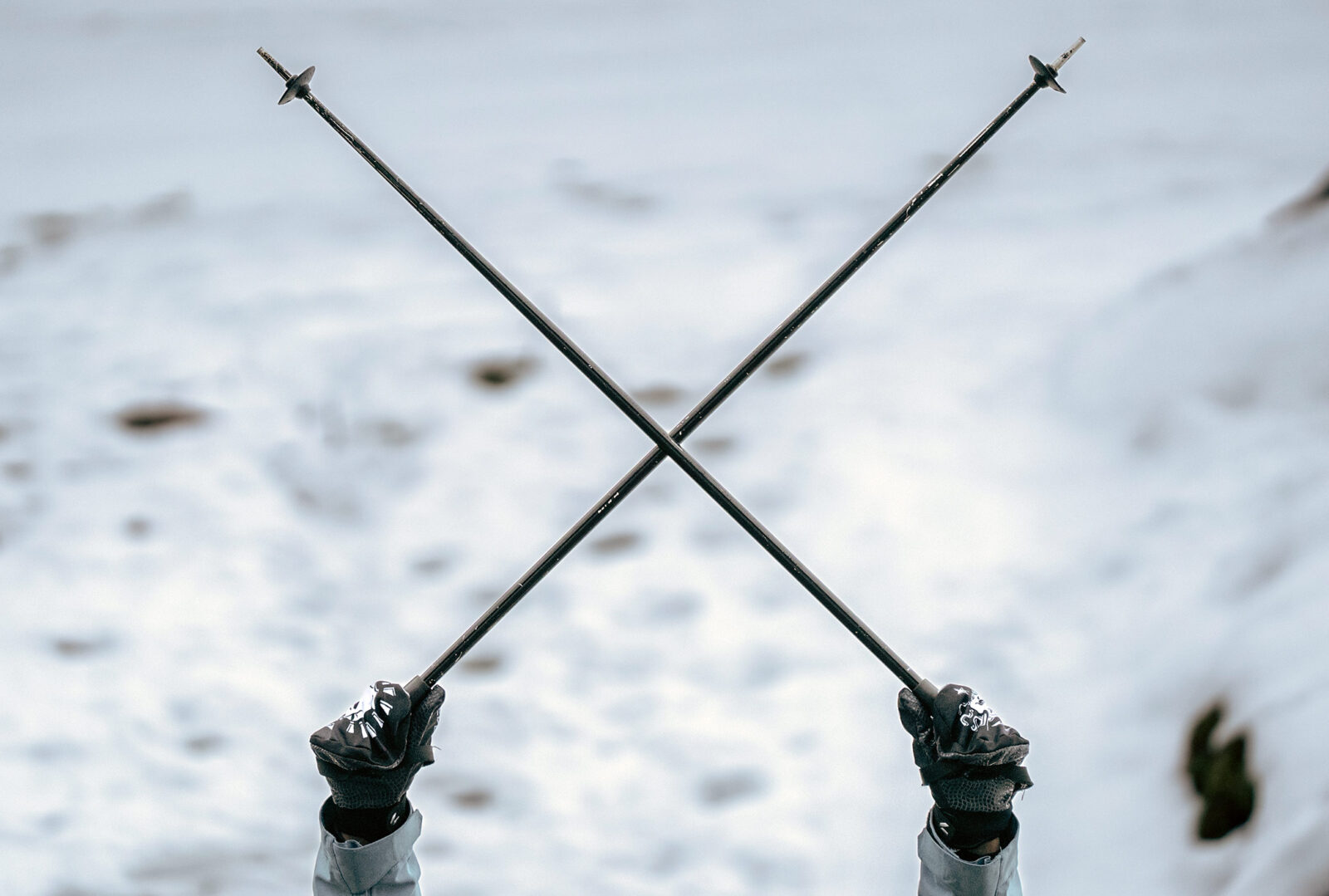
Stories
HighlightPointy sticks required
FIS says no to no poles
Poles: Who really needs 'em anyway? Anyone who wants to get a decent score at any major FIS-sanctioned freeski contest, that's who.
That’s due to a new entry in the FIS freeski judging rulebook that, as of this season, requires all competitors at top-level contests (like World Cups and Olympic Games) to use poles during their competition runs, or be penalized with a low score.
The rule change comes in response to years of debate about poles vs. no poles at the highest level of competition, and represents a significant reaction to a trend that saw increasing numbers of skiers opting not to use poles, particularly in Big Air, in order to gain a slight advantage by making it easier to grab.
So skiers have to use poles now—what’s the big deal? you might be asking. Well, this decision marks a major change in how the sport will look in the future, both for spectators and competitors. And it’s a significant intervention in a sport that is famously adverse to rules and regulations. So let’s unpack this rule change a bit more.
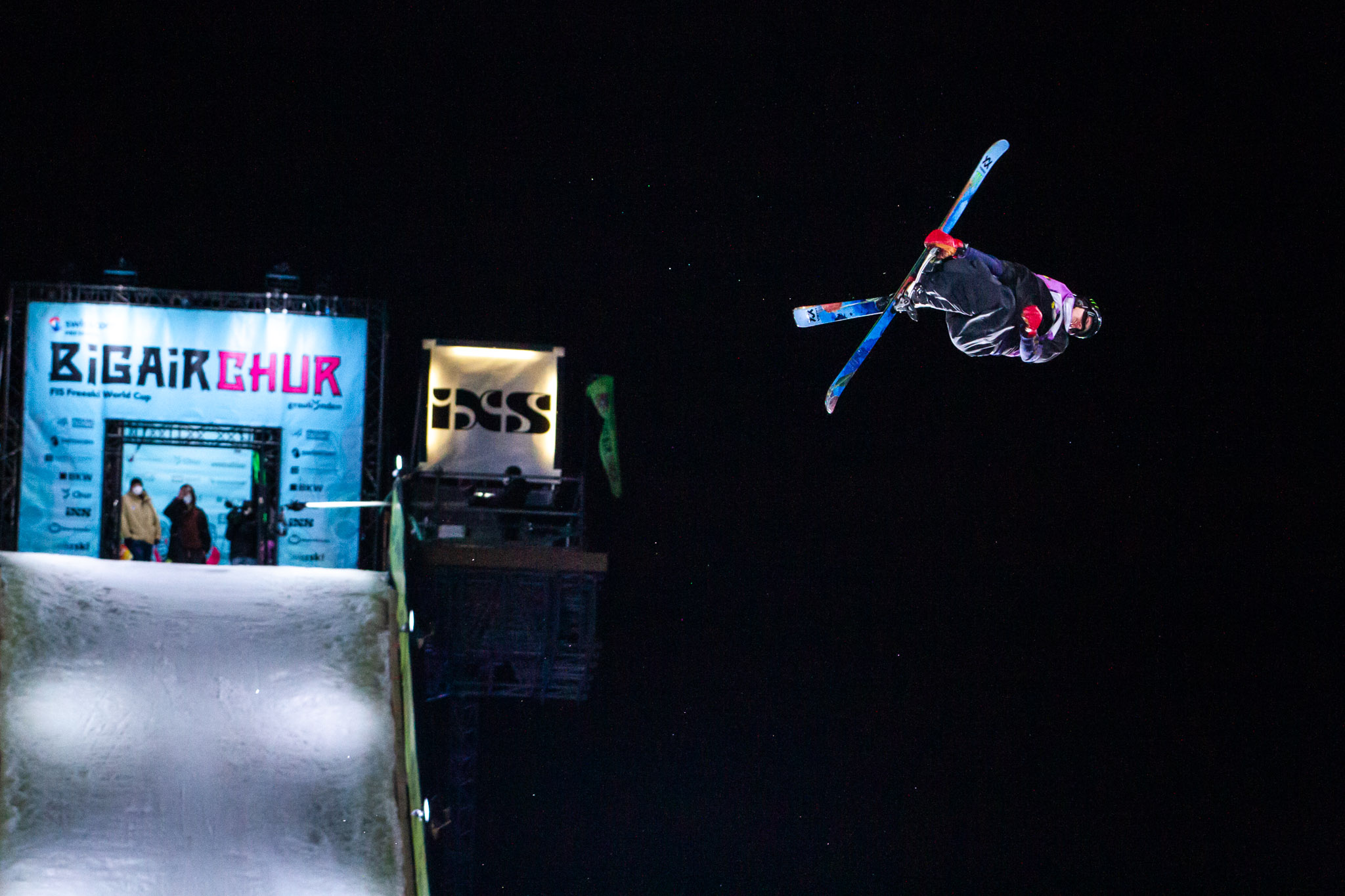
No more no poles: Birk Ruud won´t be able to tweak his mutes like this quite as easily anymore. Photo: Stone
The devil’s in the difficulty
There are plenty of arguments for and against the use of poles. Among those debates, there’s one point that seems to be universally agreed upon: Using poles is more difficult. In fact, the wording of the new rule makes clear that this is the deciding factor behind the change. Here’s the text, straight from the book:
8.2.1 Judging Considerations: Difficulty
Poles (Freeski): It is commonly agreed that using poles drastically increases the complexity and difficulty in competitive Freeskiing. Over past seasons, the Freeskiing community came to an agreement the [sic] using poles should be mandatory in all Level 1 competitions (OWG, WC, WSC, WJC and YOG). An athlete who chooses to compete without poles will be scored accordingly and will receive a score in the crash range.
- FIS Snowboard & Freeski Park & Pipe Judges handbook, Fall 2023 edition
For outsiders to the sport, it might not be immediately obvious why using poles is more difficult. For the average skier, poles are useful for pushing on flat ground, maintaining balance and in general, having something to hold on to while barreling down the slope. In fact, this average skier would probably argue that it’s harder to ski without poles.
However, these considerations fall away at the highest level of freeski competition, where skiers are sound on their feet and (hopefully) in their technique, and don't need poles to prop them up. They aren't worried about making it down the piste, but rather making it through a double or triple-flipping rotation, all while having their hand securely fastened to the bottom of their ski for the all-important grab. In this context, it's clear that having to hold onto two sticks in your hands while spinning, flipping and grabbing all at once is more of a hindrance than a help.
As Olympic gold medalist Mathilde Gremaud put it succinctly, "It's not a lie that you can grab easier without your poles."
"This has been a topic of discussion for a long time, and we all know it’s the general opinion of the freeski community that skiing with poles makes certain aspects of the sport more difficult - especially grabbing," Chad Buchholz, Media Coordinator for FIS Park & Pipe, told Downdays. "However, a 'general opinion' doesn’t really help the judges in doing their job, as until now there’s been no hard line for them to follow in assessing their scores as far as poles or no-poles goes. Sure, the judges would prefer to see poles, but is it fair to arbitrarily dock an athlete points because they don’t have poles? How many points would be a fair number to withhold?"
The only effective way to resolve the issue was with a rule, Buchholz said, and that's what has happened. "A rule proposal was put forth at the spring meetings in April in Dubrovnik. That proposal was unanimously supported by the nations. After some tweaking through the summer it was ratified at the fall meetings in Zurich and now it is there in the rulebook in black and white."
The view from the judges’ booth
For a more thorough explanation of the change and the background to it, I called up head judge Jason Arens, who's been influential in shaping the course of freeski judging over the past several years.
“The reason that this came about was, we've obviously been noticing the influence of airbags in skiing over the past decade or so, and how nobody is skiing with poles on airbags,” he told me. The situation came to a head at the World Championships in Georgia last season, where some competitors without poles were dropping into the Big Air jump in classic aerials style, arms over their heads, Arens said. At that point, the judges’ panel talked with the skiers and essentially agreed to a pole mandate for that contest.
“We addressed the athletes and kind of got permission from them, because it is objectively more difficult to do these things with poles,” Arens said. “They will continuously not use poles because it’s making it easier for them to get these grabs, and essentially, until we tell them it’s a rule, they will not use them to gain an advantage.”
“From a judging perspective, it’s been borderline impossible for us to equate poles vs. no poles,” Arens continued. “That’s why we kind of looked at it as if nothing was different, more or less. Poles vs. no poles came from an individualistic, stylistic approach to contest skiing, with skiers wanting to compete without poles to not be held back by poles in what they were doing. But then it kind of came to a clear point of using it as a competitive advantage, because it’s objectively easier to get these grabs and hold them without poles.”

Inside the booth, judges will no longer have to pretend to ignore the differences between poles and no poles in a contest run. Photo: Stone
Arens pointed out that the rule has been added as a “judging consideration,” rather than as a fixed part of the judging criteria. That means that judges now have the discretion to adjust scores based on poles—something they couldn’t do before—but that there’s still wiggle room in the equation.
“It’s a consideration, not a rule, technically,” he explained. “They didn’t want to get into the equipment rule side of it, because those are more permanent. This is more that objectively, based on what we’ve heard from the freeski community, we have the ability to give anyone skiing without poles a crash score from the judges’ perspective.”
Nevertheless, the rule, or consideration, or whatever, brings up some unanswered questions—like what to do with medical exemptions if a skier has an injured hand, and how exactly a ski pole is defined to begin with. Arens said that some high-level athletes have already begun customizing their pole grips to make grabbing easier.
“I am curious where it is placed as a judging consideration rather than a rule,” Arens continued. “The rules as they stand are very hard to change once they are in effect. So I get the feeling this is more of a test run. I also get the feeling there are going to be many discussions, because all the nations are asking about allowances for medical clearance.”
Will athletes suddenly start showing up at contests with doctor’s notes for “wrist injuries” that allow them to ski without poles? Will there be a black market for custom-fit pole grips that allow for easier grabs? All this remains to be seen. Even so, Arens said he is glad that there’s finally some clarity on the issue.
“I’m not trying to have a bunch more rules incorporated into this sport that was founded on a lack of rules,” Arens concluded. “However, it became very clear from the athletes that they were going to continue to use this loophole until they were told that they were not allowed to.”
“It really has come to a breaking point where I came to agree that it would be better if everyone used poles.”
What athletes think
As always, the reception from athletes has been mixed. Most, however, seem to agree on the principle that poles should be a part of freeskiing competition going forward.
“We’re not big fans of rules in general in freeskiing,” said Swiss slopestyle and big air rider Mathilde Gremaud. “That’s why, even when you look at how the sport is judged, there’s not a big rule book. But it’s progressing super fast, and it’s not a lie that you can grab easier without your poles.”
“With the progression and where the sport is going, it’s all happening super fast,” she continued. “I think that if poles can maybe slow it down a little bit, it’s a good thing, because there are a bunch of things that can be explored in our sport, and maybe the way of doing it was a bit too quick without the poles.”
“It’s not for everyone, but I don’t mind the rule,” she added. “I don’t see a huge difference. It’s part of the game now, and that’s what it is. In the end, every nation had to vote for it. It was a vote, and people decided. So I don’t see a problem with it.”
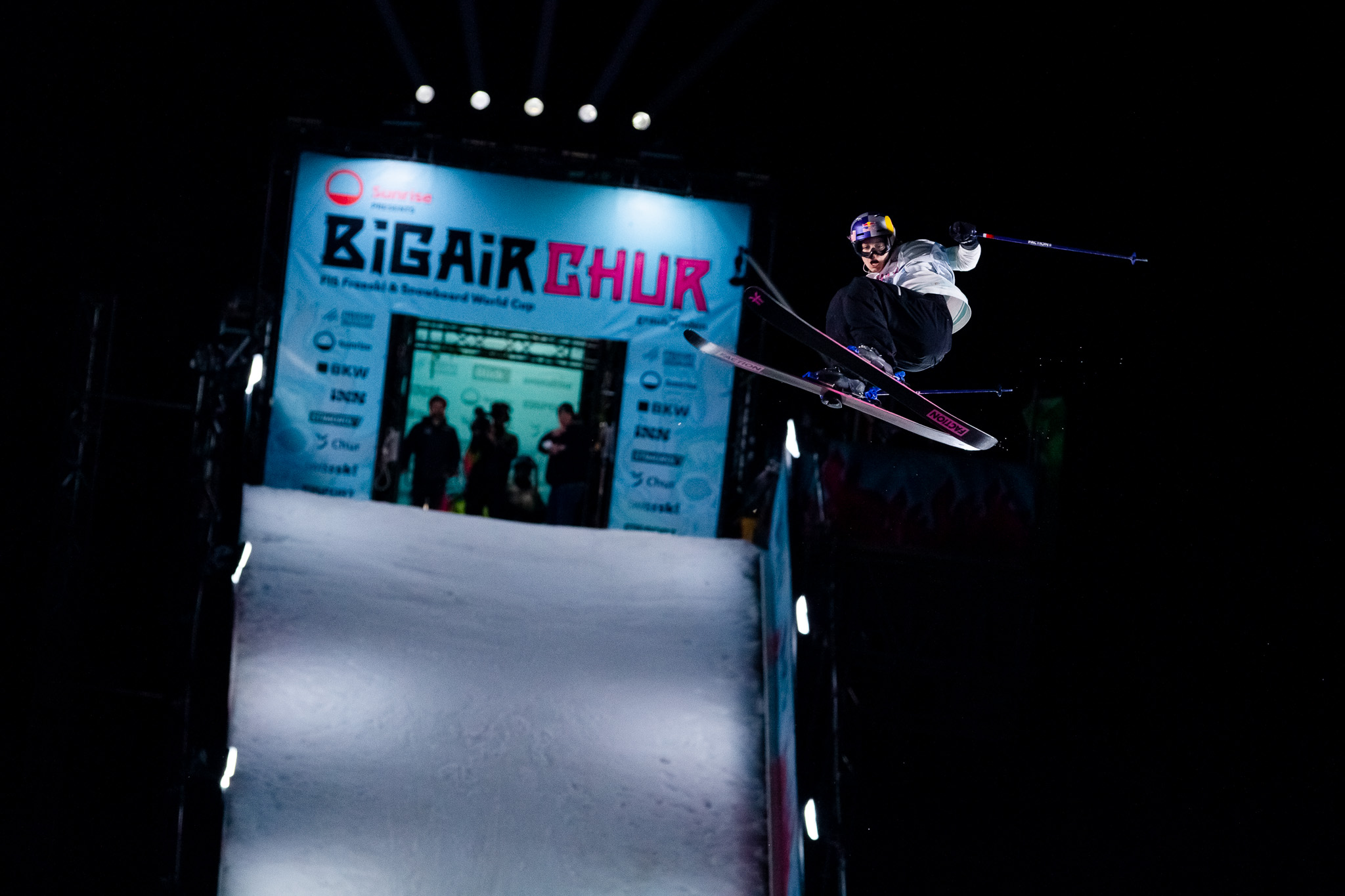
Mathilde rocking poles back in 2022, even when she didn´t need to. Photo: Stone
American freeskier Mac Forehand agreed. “Obviously in a sport like freeskiing, adding rules is something we don’t want to see. But in the past couple of years we’ve seen people drop their poles to make it easier to grab, and I think adding poles into the rulebook might make the sport a little more interesting.”
Forehand made an oblique reference to the skiers who are now learning their tricks exclusively on airbags: “Some people can’t really ski with poles, and you can see it in our contests for sure. So I think it will make it a little more interesting. I still don’t really know how I feel about the rule change, but we’ll see this season.”
A question of style
The objective difficulty of using poles compared to not using poles has been used as the catalyst for this change. But still, nobody’s kidding themselves about the real reason for the pole rule: Freeskiers don’t want to look like aerialists. If that weren’t the case, I seriously doubt that anyone would have a real issue with poles slowly but surely disappearing from Big Air competition altogether.
Over the past few years, the Swedish freeskiing team and their coach, Niklas Eriksson, have played a leading role in advocating for the use of poles in competition. A 2021 Instagram post on the @freeskiswe account during the lead-up to the Olympic debut of Big Air in Beijing kicked off a firestorm of comments that showed the poles vs. no poles divide runs deep. A scroll through the comments quickly reveals that this controversy is nothing new. The debate about whether or not to use poles has been around for about as long as skiers have been grabbing their skis, sliding rails and sagging their pants to unreasonable depths.
View this post on Instagram
A brief history of no poles
Long considered an indispensable part of any skier’s equipment, poles first started to lose their “must-have” status in the throes of the freeskiing revolution in the 2000s, when skiers began dropping them for reasons of style, convenience, or because they just got tired of breaking or losing them.
Perhaps the most well-known early adopters of no-poles skiing were the Nimbus Independent crew of Eric Pollard, Andy Mahre and Pep Fujas, who practically made an entire movie—2007’s seminal Idea—about skiing without poles (and with very fat, rockered skis. Long live the Hellbent!). If you haven’t seen this movie before, stop what you’re doing and watch it right now. There's little doubt about what most of the skiers from the generation of "Fuck FIS" would have to say about FIS making a rule about using poles.
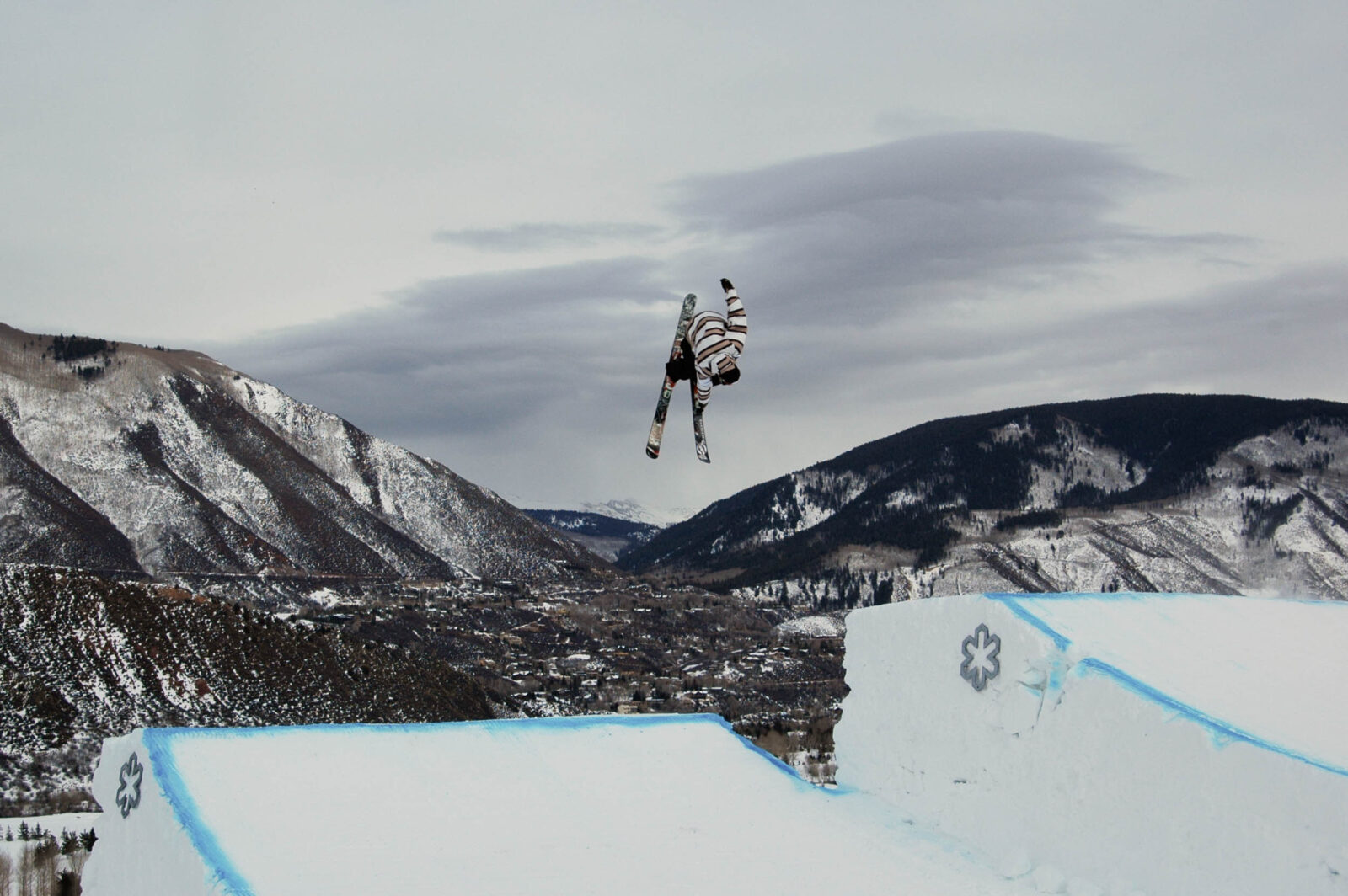
No poles is nothing new: Andy Mahre at the 2007 X Games slopestyle. Photo: Stone
These days, many skiers choose to lay their poles down simply because they think skiing looks better without them. They might be consciously or unconsciously drawing influence from sports like snowboarding, skateboarding and surfing: all major influences on the modern sport of freeskiing, and all conspicuously performed without handheld sticks. Or, they might just like skiing better without poles—simple as that.
No-poles skiing has also seen a renaissance of sorts in street skiing, where poles have become strictly optional. Let’s face it, it’s hard to hold onto poles at the same time as a winch is flinging you at high speed towards a high-consequence urban spot.
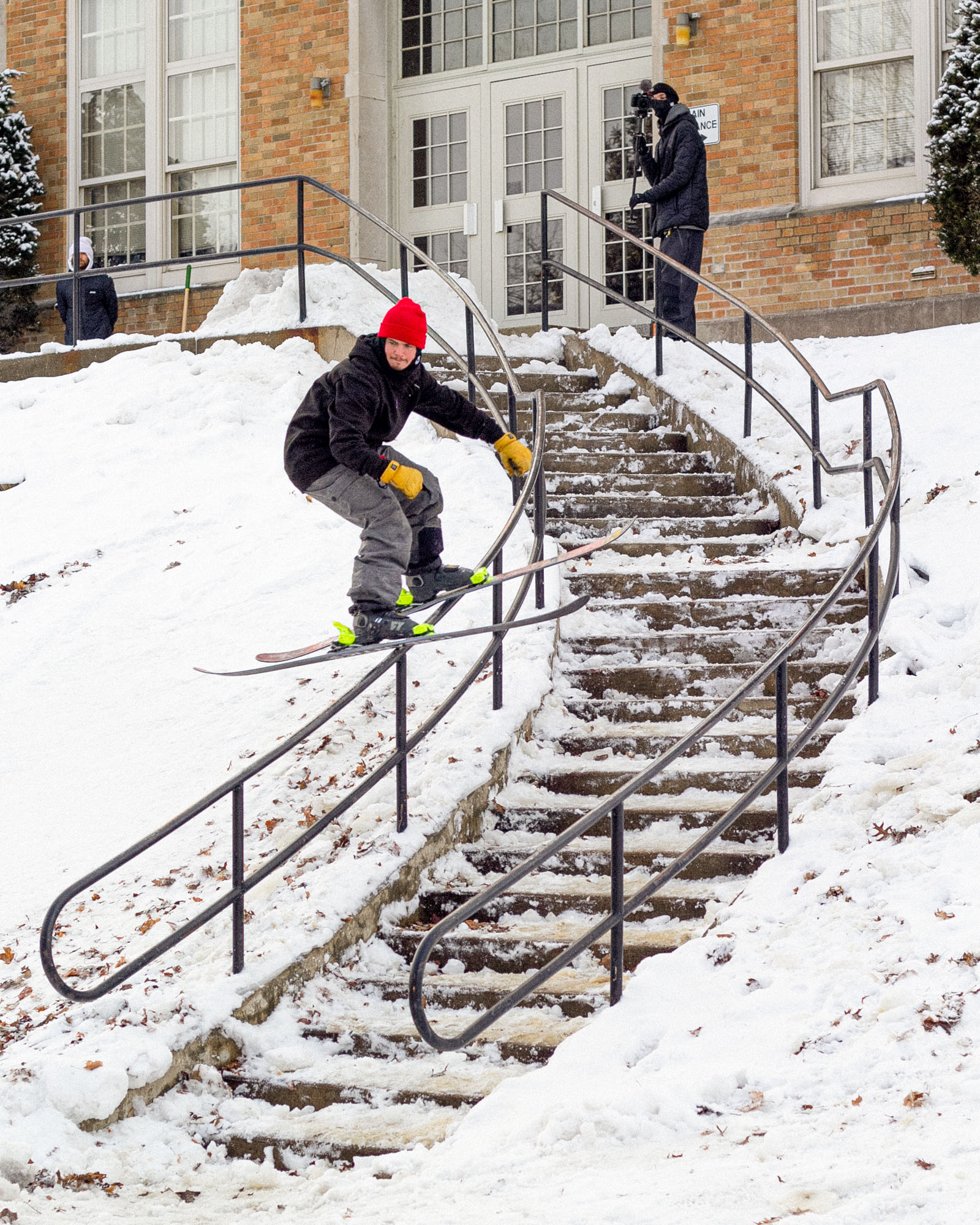
Riding without poles has become commonplace in street skiing. Calvin Barrett filming for "Most Gutter." Photo: Strictly
To pole or not to pole?
At the end of the day, using poles is a strictly subjective choice. Freeskiing is all about being free, and so nobody can or should dictate how you do it. A few years back I met the respected Finnish skier Anttu Oikkonen on the mountain, and he was rocking one extraordinarily long pole. It looked glorious.
At the same time, it’s hard to argue against the fact that there’s an objective difference in difficulty in poles vs. no poles at the highest level of competition, and that this difference deserves to be addressed by judging panels. Is mandating poles the right solution? Only time will tell.
The one voice that seems to be left out of the conversation is that of the handful of contest skiers who genuinely prefer to ski without poles, and like the way their skiing looks without poles. Granted, it’s not every day that we see some forward-thinking skier swerve their way through a slopestyle course with butters, hand drags and knuckle taps. But with the new ruling in place, the door has all but closed—at least for the time being—on this outside-the-box approach to freeskiing competition. While the no-pole ban may seek to stifle one specific trend in freeskiing, it might also be throwing the baby out with the bath water by stifling a broader creative approach.

